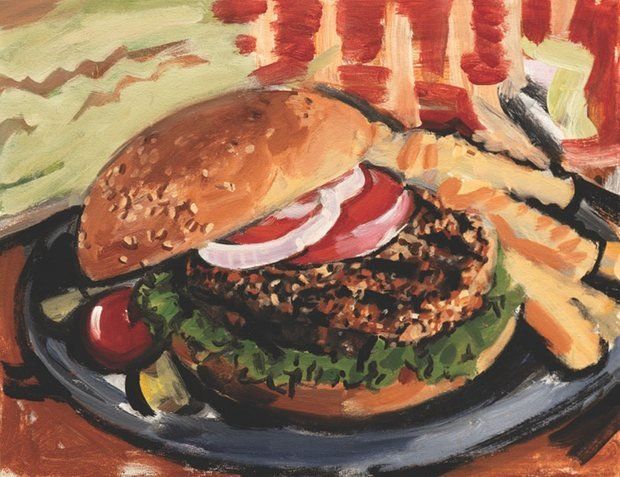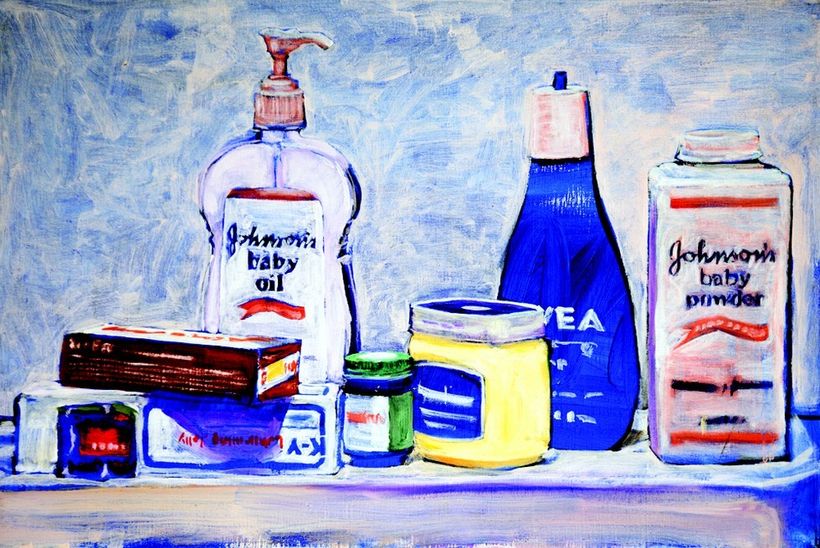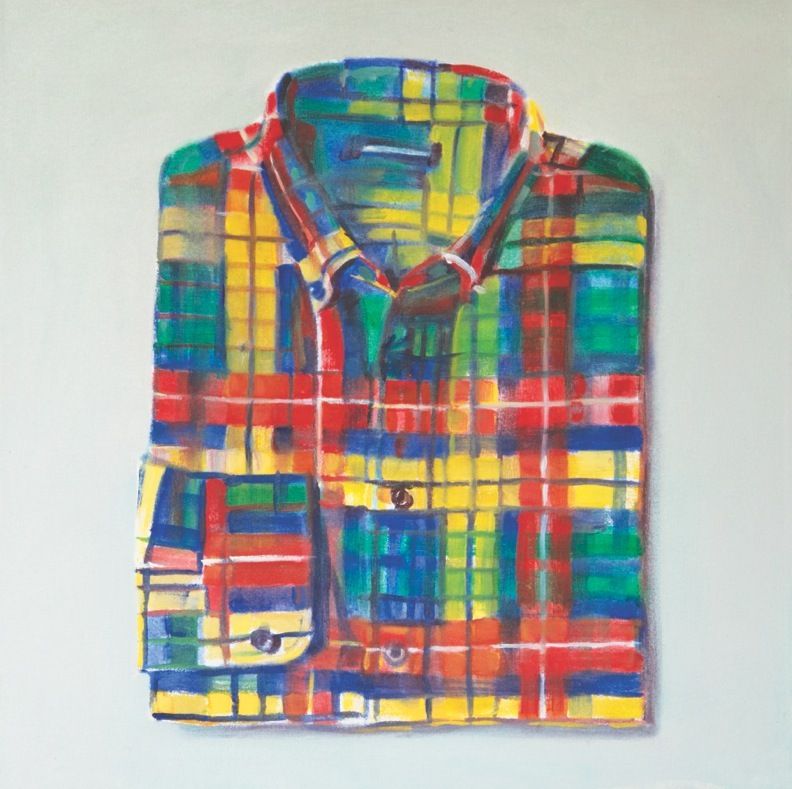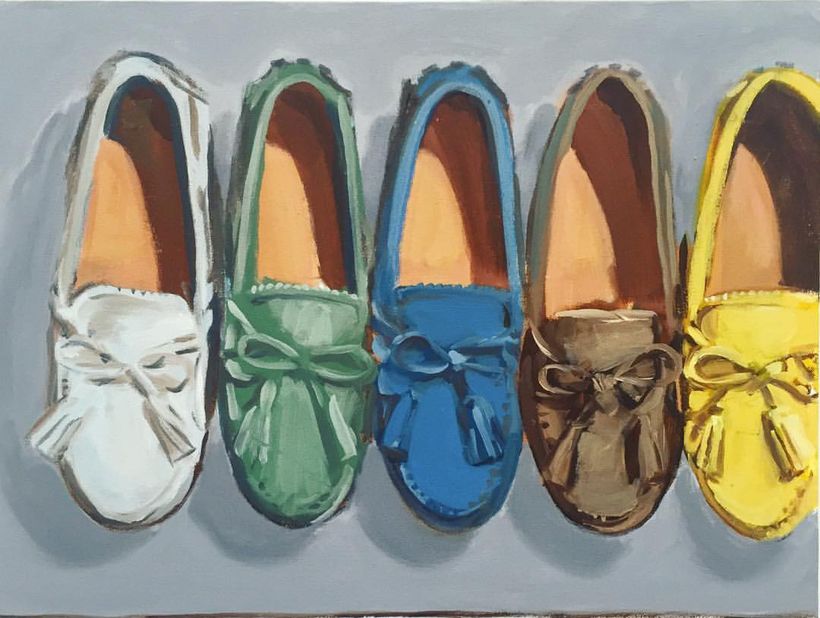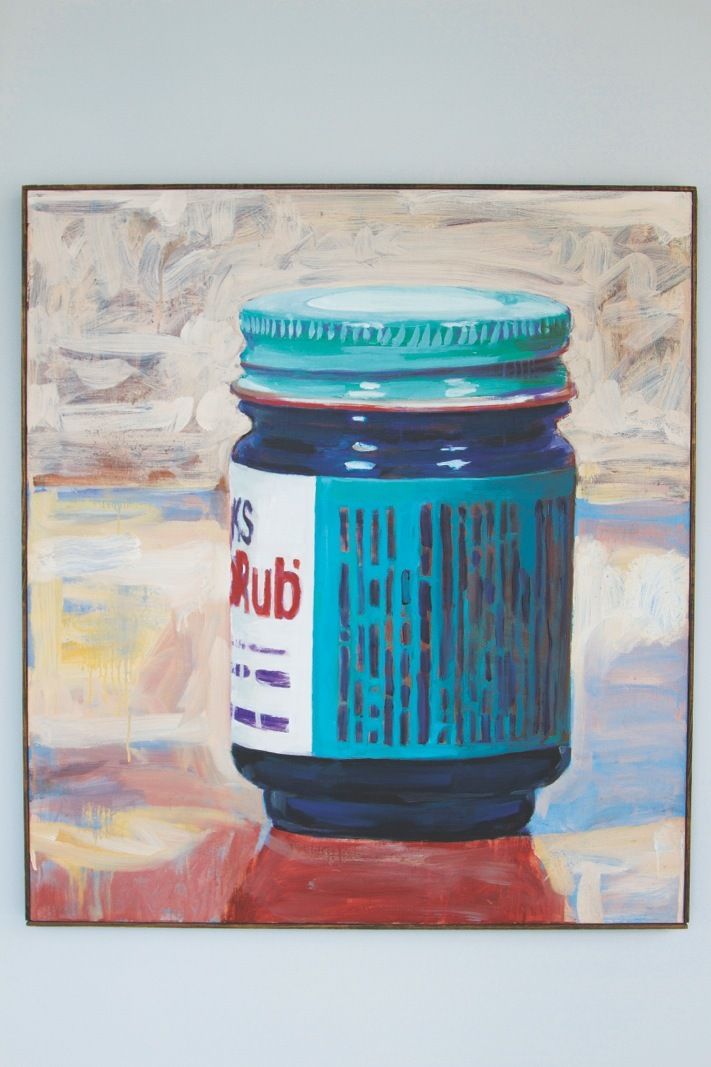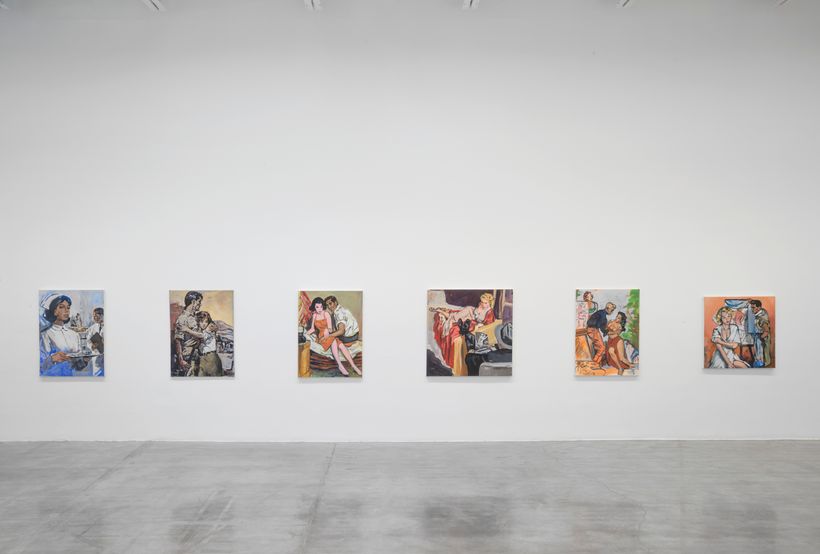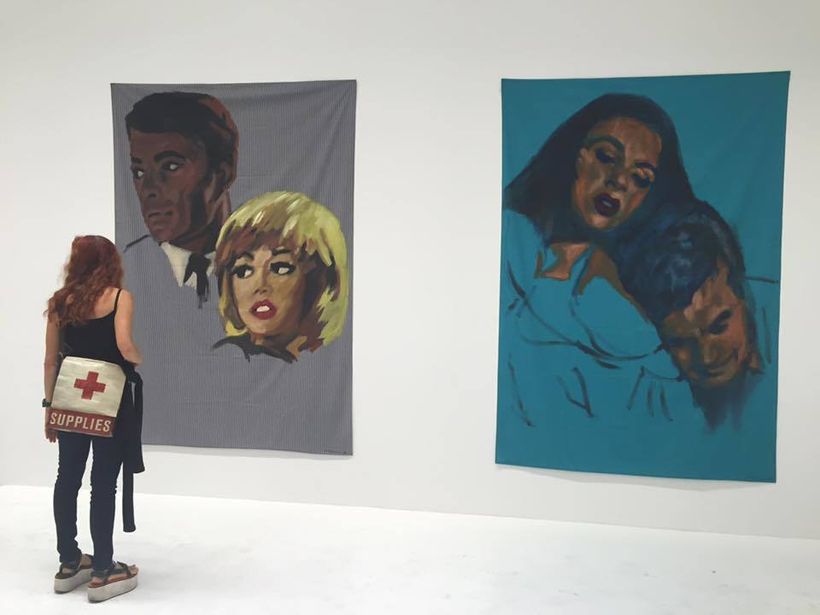COURTESY OF JEFFREY DEITCH
Walter Robinson, the painter, critic and former editor of Artnet Magazine, is currently having a show at the newly re-opened Jeffrey Deitch Gallery in New York City. Titled “Paintings and Other Indulgences,” it is the first full survey of Robinson’s paintings—it features 94 works made between 1979 and 2014—and was curated by Barry Blinderman.
Robinson, who, according to the exhibition’s press release, addresses “the collision of capital and everyday cravings in a media-saturated world,” is an unassuming yet influential art world figure. “Generosity and humility combined with humor and intelligence are rare traits in artists,” comments artist and writer Carol Diehl, who has known Robinson since the early days. “At least there is one, and he’s getting his due.”
His pulp fiction inspired images of sexy doctors and nurses came years before Richard Prince’s nurses, and Robinson made his first “spin” paintings at age seven, beating Damien Hirst by decades. Robinson the critic coined the very apt and funny phrase “Zombie Formalism,” while making salient points about the vapidity of art made for the speculative market.The Post-Pop imagery that established Robinson’s reputation is both affectionate and funny. Robinson has a genuine passion for mainstream American culture—and its relative blandness—and for the “normcore” acoutrements of American fashion.
John Seed Interviews Walter Robinson
PHOTO: AYN S. CHOI
Walter, where and how did you grow up?
I grew up in Tulsa, Oklahoma, which though it may seem like a “western” or “southern” state was in fact Suburbia, USA, or at least it was in my lily-white neighborhood. Ranch-style houses, green lawns, shopping centers. We rode bikes without wearing helmets, and played baseball in the vacant lots.
My father was a civil engineer who worked for Dupont, my mother raised me and my three younger siblings, and later went back to work as a social psychologist. High school was like high school everywhere — S.E. Hinton did a good job capturing the Tulsa scene in her book “The Outsiders,” which Francis Ford Coppola made into a movie. Ever see that? Also “Rumblefish.”
COURTESY JEFFREY DEITCH
When did you know you were an artist?
When I turned 60?
Actually one of my earliest memories is being the kid in kindergarten who could draw. I’d draw high-noon showdowns. The sheriff wore a star and the bad guy a black bandanna. I remember putting both the star and the bandana on one character, which must have been the beginning of my avant-garde career.
Another early memory is my discovery of abstraction at age 7 in 1957, when I made my first spin painting on the boardwalk in Ocean City, NJ.
COURTESY OF JEFFREY DEITCH
Tell me about getting started as an artist and your early days in the East Village
The 1980s, when my painting career really began (in the ‘70s I was experimenting with super-8 films, and publishing Art-Rite, our own ‘zine), are basically a blur. I remember borrowing a friend’s loft to paint a series of five large — 9 x 9 ft, and 9 x 12 ft. — paintings on dropcloths for the 1983 Terminal Show in Brooklyn. They hung like great banners from a pedestrian bridge that crossed the huge atrium of the concrete Art Brut building. That’s not much of an anecdote. Maybe Carlo McCormick could give you a better one: he was an East Village celebrity and I was his driver.
I had shown my paintings first at Metro Pictures in SoHo, but then I met and started hanging out with the gang in the East Village, and when the dealers there — like Piezo Electric and Semaphore Gallery — asked me to show, I went ahead and did it. Perhaps I should have focused more on Metro, but what the hell, we exhibited freely in group shows at various galleries, in exhibitions at nightclubs and bars. I realized that the East Village had really come of age when Carlo McCormick arranged a series of 10 one-night shows at the Limbo Lounge on East 10th Street. If ten artists could drag their stuff to that coffee shop, install it for a day and then take it away, making room for the next artist, I knew that the East Village had energy to burn.
COURTESY OF JEFFREY DEITCH
You have said you are into “norm-core.” Tell me about what that means in regards to your paintings.
Normcore is actually a word from the fashion industry, and it refers to clothes with no real style. Notable would be Lands’ End and L.L.Bean, I think, simple middle-class gear with no pretense towards chic or vanguardism. The advertisements for this kind of clothing, either mail-order catalogues or newspaper inserts (and now emails), appealed to me as a kind of anti-art, and anti-kitsch, too — in other words, the least desirable, most transitory kind of imagery you could think of, something that was practically invisible. So I started using these bland fashion shots as the source for figurative paintings. It’s a special type of imagery — models selling clothes.
COURTESY OF JEFFREY DEITCH
They connect to the viewer, they instigate a back-and-forth dynamic that is typically different and more aggressive than ordinary paintings, which just sit there on the wall to be looked at. The imagery has already been designed — the outfits have been designed, the models have been made up, the poses have been perfected. It’s market-ready. In addition this material is segmented by season, by age, by gender. So you can have girls selling down coats and knit caps in winter, or women selling bikinis in the summer, or men selling suits at any time. The body is also segmented in these advertisements by the various products they’re selling; you have images of men’s shorts, for instance, or ladies’ shoes.
An example in the retrospective at Deitch is “Shoes,” 2014, which shows a row of tasseled loafers — they could be Tod’s, I don’t remember — in various colors. It’s like Ellsworth Kelly. Another subcategory of the normcore paintings are the paintings of folded shirts. For me they were an excuse to make an essentially abstract painting, a painting with stripes or colorful geometric shapes. The white shirt is supposed to be like a Robert Ryman.
COURTESY OF JEFFREY DEITCH
Peter Schjeldahl says that your work has a sense of “innocence” about it. Is he right?
Whatever Peter says, I agree with.
COURTESY OF JEFFREY DEITCH
As a critic you have lamented the “market model.” Do you have any hope that the model is changing for the better?
Did I lament the market model?
Actually, I think as a critic I took more interest in the market than most other commentators, who tend to dismiss it in disgust. In fact it’s fascinating, the interplay between esthetics, art history, the construction of opinion and the art market. I like to think of auction prices, say, as an arbitrary but clear measure of the value of an artwork. It’s a completely different standard than critics’ opinions of an artwork’s quality, which is very subjective and uncertain. Most of the time, the opinions of most art lovers are being formed and constrained by market forces they’re not even aware of.
What’s that Marxian saying; “Better attend to the invisible hand of the market, because the invisible hand of the market is certainly attending to you!”
COURTESY OF JEFFREY DEITCH
Whose work do you like right now?
Oh, well, when I was an editor and art writer, I was allowed to like many many things, it was my job to be open-minded. Now that I’m an artist, I have no interest at all in anything by other artists.
PHOTO BY ADAM REICH COURTESY OF JEFFREY DEITCH
What are your personal interests and causes outside the realm of art?
Vote the chick not the dick!
Anything else that needs to be said?
Be sure to see it: the exhibition is on view through Oct. 17.
PHOTO: KATYA KAZAKINA
Walter Robinson: Paintings and Other Indugences (A Retropsective)
Curated by Barry Blinderman
September 17 - October 22, 2016
Jeffrey Deitch Gallery
18 Wooster Street
New York



